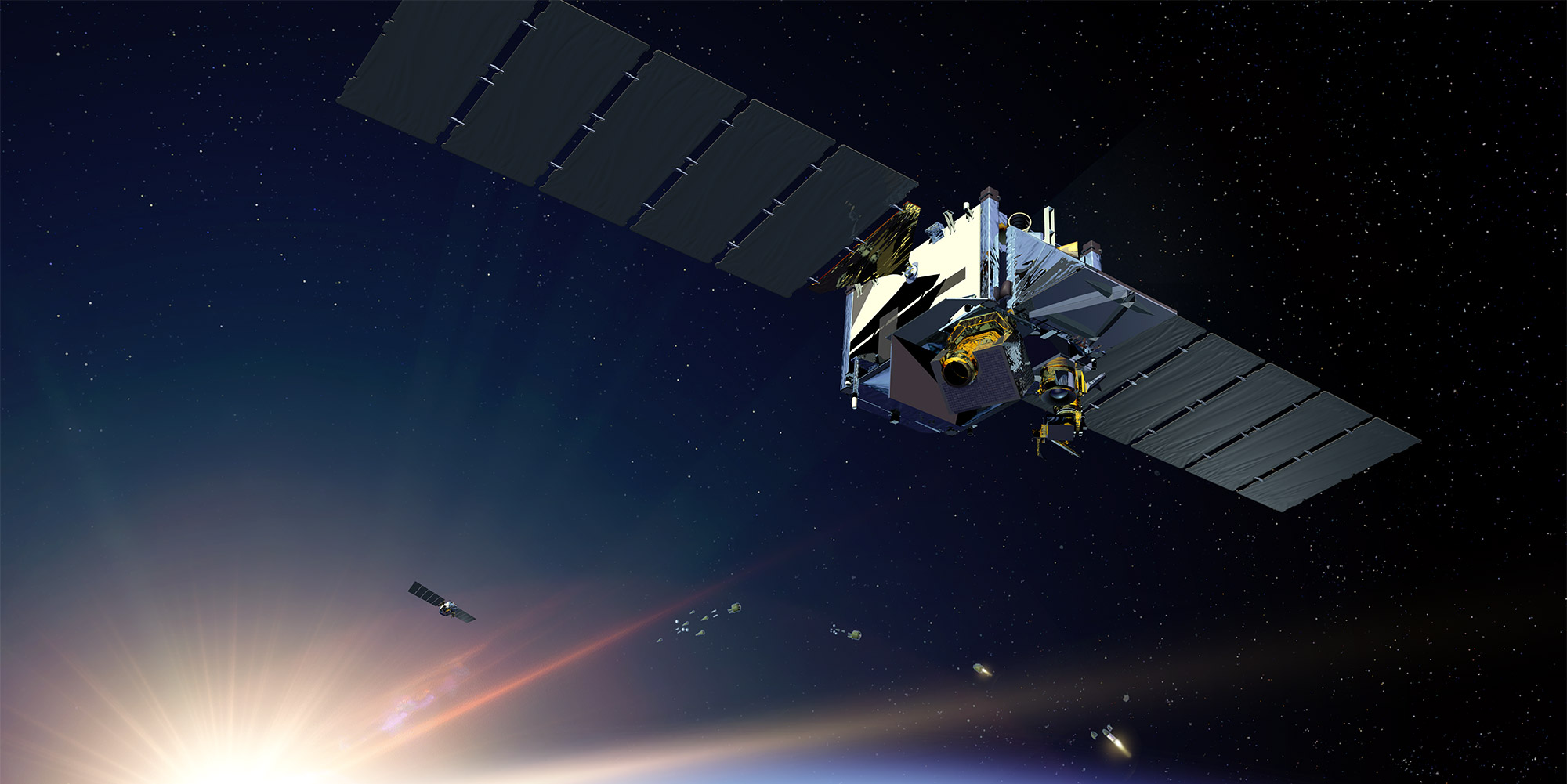Space Tracking and Surveillance System (STSS)
A Stellar Record of Performance.

Built by Northrop Grumman Corporation in support of the Missile Defense Agency, two demonstration Space Tracking and Surveillance System satellites successfully completed their missions and have been retired.
Their achievements pave the way for future operational missile warning and tracking systems that will defend the nation.
Stellar Performance
Launched in 2009 and expected to operate for four years, these demonstration satellites outlived their design life threshold three times over. Now we are applying what we learned from STSS for future systems to keep America and its allies safe.
The STSS experimental spacecraft proved their ability to detect and track short-, medium-, intermediate- and intercontinental-range missiles from boost phase to midcourse, then communicate target-quality track data to command and control systems for interception.
Capabilities
The satellites used sensors to:
- Detect and track ballistic missiles for interception.
- Track targets.
- Help discriminate real threats, guide interceptors to targets, and assess interceptor hits.
- Collect data on launches, on-orbit satellites, satellite re-entries and other space-based missions.
- Play a critical role in one of MDA’s integrated Ballistic Missile Defense System flight test.
Mission Highlights
- Aegis Launch on Remote - FTM-20 (Stellar Eyes)
- First Birth-to-Death Track - FTM-16 (Stellar Beowulf)
- First Stereo Birth-to-Death Track - FTX-16 E1 (Pacific Eyes)
- RAMBO - Shuttle Plume Observation
- First Impact Collect, First Crosslink Cue on Missile test - FTM-15 (Stellar Charon)
- Enhanced Crosslink Operations - FTG-07
- Three Simultaneous Missile Tracks - FTX-18 (Atlantic Darts)
- Complex Scene - FTX-20 (Pacific Wildcat), GM-CTV-02+
- Long-Range Midcourse Track - GT-212
- Use of MWIR in Operations - FTX-21 (Pacific Phantom)
- Track Through Reentry - FTM-27 E2 (Stellar Cestus)
- Intercept Collect - FTI-03 (FTO-03 E1) (Stellar Wawel)

Data Collection
STSS has collected data across the broad range of missions to include:
- Space launch tracking
- On-orbit satellites
- Satellite re-entries
- Scientific background and scene data on space and ground environments
STSS has detected and tracked all missile types:
- Short range
- Medium range complex target
- Intermediate-range complex target
- Intercontinental-range complex target
Vital Role for Future Missile Tracking Systems
Northrop Grumman is applying its STSS mission expertise to the Hypersonic and Ballistic Tracking Space Sensor (HBTSS) satellites, which will provide:
- Continuously updated high-quality tracks to handoff for targeting hypersonic threats.
- Near-global coverage when prompted by other Overhead Persistent Infrared (OPIR) systems.
- Fire control solution required for interception of hypersonic glide vehicles.
Media Contact
Carri Karuhn
520-416-7256